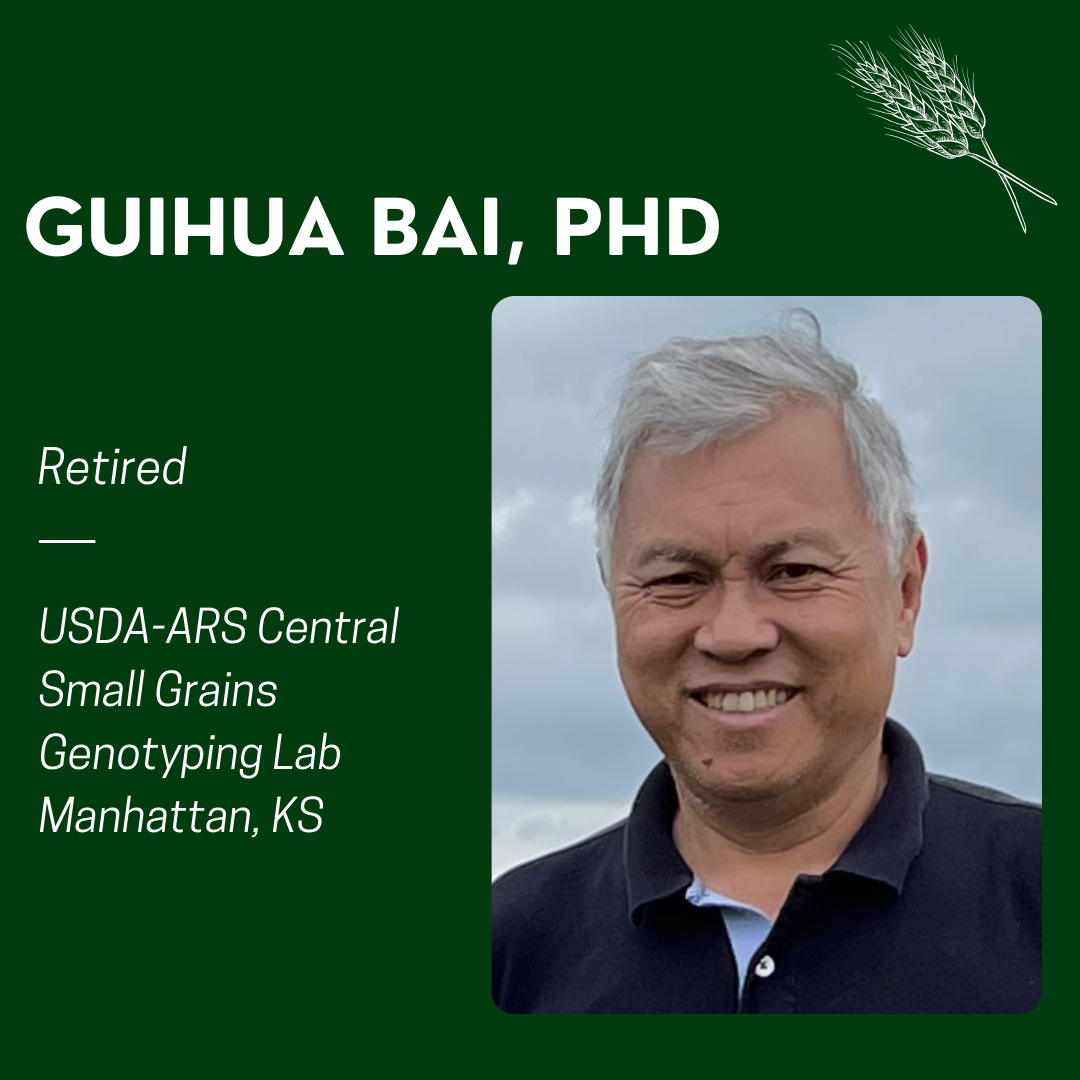Featured Researcher Bio - Guihua Bai 2025

Meet Guihua Bai, an adjunct professor at Kansas State University. Bai was funded by the USWBSI from 1999 until 2024. During those twenty-five years, his projects focused on developing gene editing techniques and identifying and deploying QTL for FHB resistance. He recently retired from the USDA-ARS after more than twenty years as a research plant geneticist and the lab director of the USDA Central Small Grains Genotyping Lab in Manhattan, Kansas.
Seeing Benefit of Good Cultivars from Farm Experience
Bai grew up in China. After high school, he was unable to attend college due to the Chinese Cultural Revolution which closed all the universities in the country. Thus, he worked on a farm for four years before finally being admitted to college. This four years of experience allowed him to see the benefits of good cultivars in crop production and inspired him to work on wheat breeding and genetics. He graduated with his bachelor of science in 1982 and obtained his master of science degree in 1985 from Nanjing Agricultural University. Following those degrees, he went on to pursue his doctorate degree from Purdue University.
Identifying and Implementing Sources of Resistance
Since being a part of the FHB community, Bai believes his biggest accomplishment is cloning the Fhb1 QTL and developing markers to aid in selection which have been used by breeders worldwide. Fhb1 alone has since been transferred into 11 hard winter wheat breeding cultivars adapted to the Great Plains. One recently released cultivar from this work is ‘Scab Stryker’ developed by Oklahoma State University.
Other notable contributions include: being the first to demonstrate DON as a virulence factor and being among the first researchers to demonstrate a major QTL controlling FHB resistance. Bai also cloned and confirmed that TaHRC was the causal gene of Fhb1 and identified it’s interacting genes. In addition, he participated in the cloning of Fhb7 and demonstrated that it encodes glutathione S-transferase (GST). Finally, he transferred and pyramided Fhb1, Fhb7, and Fhb9 into 15 hard winter wheat cultivars from six states and used marker assisted selection to select seeds containing all three QTL which were then sent to different breeding programs throughout the U.S.
Continuing to Mentor and Guide Future Researchers
Bai recently retired from the USDA-ARS, but in his adjunct role at Kansas State University, he will continue to mentor students and post-doctoral researchers in completing their ongoing research projects as well as guide them in publishing their results. This month, he was also invited to present a webinar for the USWBSI Graduate Students and Post-docs in FHB (GPFHB) organization to speak about the progress and his perspective of wheat resistance to FHB. All are encouraged to attend. To attend the webinar, please register in advance.
For more information about Dr. Guihua Bai's research, visit his faculty page.
To learn more about others in the FHB community, check out all the previous USWBSI Featured Researchers/Advocates.
